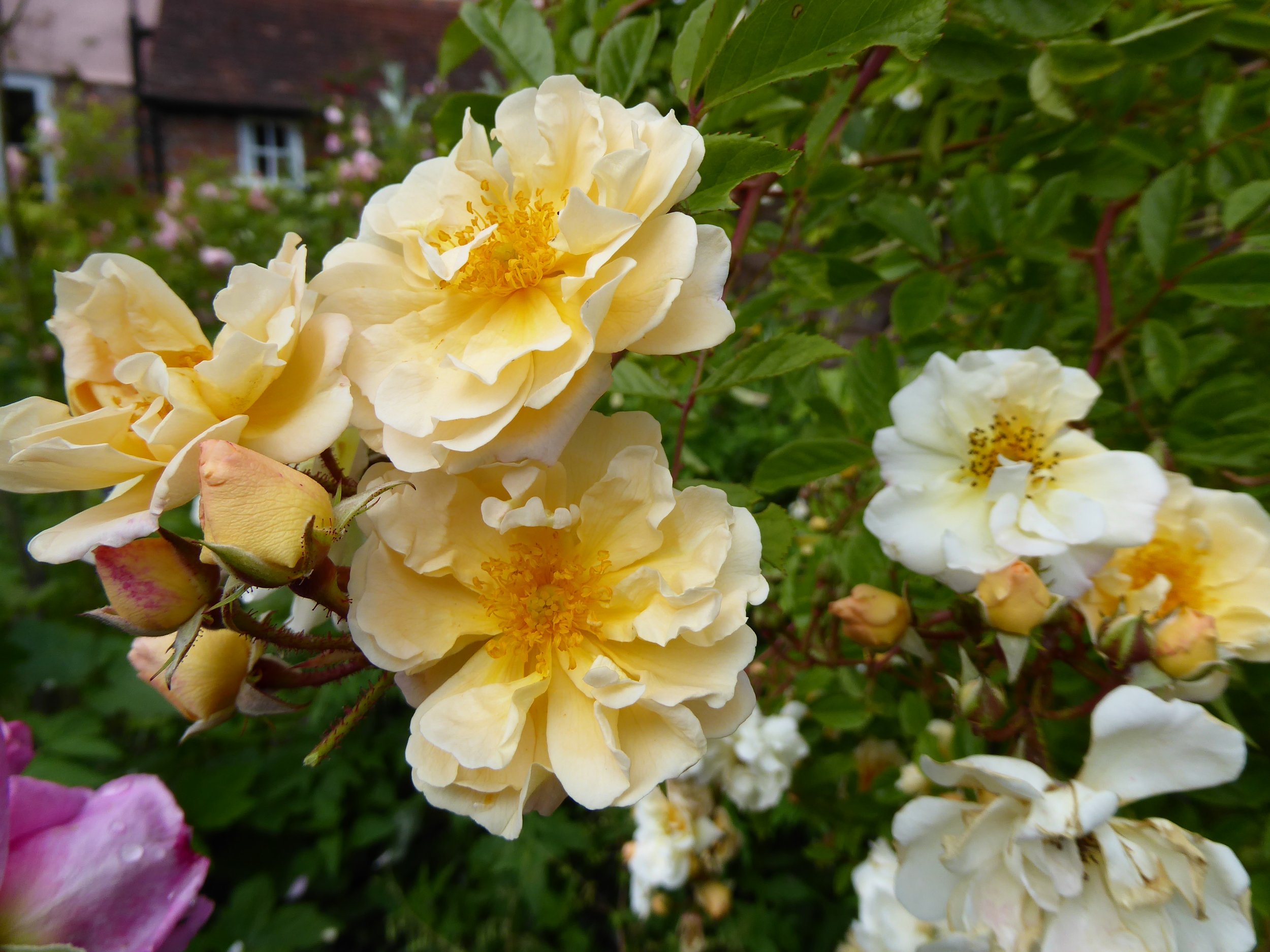Summer 2022
Summer Afternoon
“Summer afternoon, summer afternoon, to me these are the two most beautiful words in the English language.” Henry James.
I have to agree with Henry James, although I must say I am surprised that he confined himself to two words when most of his sentences consist of several hundred.
But with the arrival of June, gardeners are revelling in the crowning glory of the whole year; this is as good as it gets. Now at last, it is the time for the floral aristocrats; roses and irises, poppies and peonies. These flowers look as if they are cut out of rich fabrics; silks, taffeta and velvet. The garden is spangled with opulent colours and exquisite scents. And of all the June blooms the rose is the undisputable queen.
Many years ago I visited the garden, Lime Kiln, Claydon which belonged to a fanatical rosarian, Humphrey Brooke. He grew over 500 roses in a wonderful setting of 12 acres of woodland and ancient chalk pits. Mr. Brooke was very old when I visited him and his roses had grown unchecked for many years. He told me that he didn’t believe in pruning, feeding or spraying. He only grew roses that were capable of thriving without aid. And thrive they did. He had the biggest Rosa filipes ‘Kiftsgate I have ever seen and you know how big that gets. The garden was wild and neglected, but such a magical place of enchantment and the fragrance everywhere was amazing.
It was about this time that I discovered Vita Sackville West’s descriptions of her old -fashioned roses which were absolutely beguiling. I visited Sissinghurst and studied her way of growing roses over igloos made of hazel benders. I made a rose garden and each year I sprayed, fed and pruned my roses, renewing their climbing frames. It looked wonderful, but it was incredibly work - intensive. Now I am a bit more laisssez-faire when it comes to training roses, I let them do what they want; if they want to tumble about or climb trees then I let them, otherwise I just give them a bit of support if they want it. I do feed them because I like them growing in abandoned luxuriance. But I don’t spray them and any hypochondriacal prima donnas that always look sickly with black spot or rust are simply evicted. Of course, you never get rid of black spot completely, but as the famous rosarian, Jack Harkness once said: ’What’s a bit of black spot between friends?’ Actually I once read that Christopher Lloyd claimed to have totally eliminated black spot by having a three inch layer of grass cuttings round each rose. This makes sense as the spores lie around on the ground.
Nowadays, we have wonderful David Austin roses which are just as beautiful as the old –fashioned ones beloved by Vita. Many of them have the beautiful quartered flowers and the fragrance of old roses but they have healthy foliage and many are repeat flowering. There are so many fabulous David Austin roses that picking favourites is difficult. I will just mention a few that I am particularly fond of. First of all is ‘Grace’ as it is such a delicious shade of apricot. Next I love ‘Gentle Hermione’ as the flowers are the most delicate shade of pink and the foliage is always so healthy. Amongst the rich deep purple shades I love ‘Munstead Wood’. But as I am writing I can think of many more which should come in the top three. The rich, deep, terracotta flowers of ‘Summer Song’ always get the attention of visitors to the garden. And I have to mention ‘Lady Emma Hamilton’ because her stems and foliage are attractive as well as the gorgeous, tangerine flowers.
I love single roses and my favourites are the lovely China roses which start blooming early and carry on for most of the summer with just little rests now and then. I grow Rosa x odorata ‘Mutabilis’ which has blooms that look like swarms of butterflies in pink and honey yellow. Rosa x odorata ‘Bengal Beauty’ is red and just as pretty. For healthy foliage and a long period of blooming then Rosa ‘Sally Holmes is unbeatable because as you keep on dead-heading the white flowers, she goes on and on. For a really eye-catching bright red single rose then ‘Sharlachglut’ is unbeatable. I have seen this trained as a climber and it looked wonderful.
Choosing ramblers can be tricky as so many of them have designs on your whole garden and those of your neighbours too. I fell in love with the apricot flowers of ‘Treasure Trove’ before I realised that it was a child of the infamous ‘Kiftsgate’ which everyone knows is probably capable of taking over a whole village if given its head. ‘Paul’s Himalayan Musk’ is very pretty with masses of pale pink flowers but it too has territorial ambitions. More sedate is ‘Goldfinch’ which was a particular favourite of Vita Sackville West who said it is ‘a darling, she is my pet, my treasure; a mass of scrambled eggs’. I couldn’t agree more and it is very fragrant too. My favourite rambler is ‘Phyllis Bide’ which has masses of pretty flowers of pink and apricot. It is one of the few repeat flowering ramblers.
Amongst my climbers I love the blowsy, apricot heads of ‘Lady Hillingdon’ although she does seem incapable of holding them up. The colour looks as if they have been dipped in tea, but as she lolls about so, perhaps it is something stronger. But I mustn’t malign her namesake, Lady Alice Hillingdon. The famous words about closing her eyes and thinking of England whilst suffering unwanted attentions from her husband came from her journal from 1912. I’m sure she was too prim to take anything but tea.
If you grow lots of roses then you often find seedlings appearing and they are worth growing on as you never know what you will get. I have a huge rambling rose which has reached the top of a large holly. I think it is a child of Rosa filipes ‘Kiftsgate’; it certainly looks like it. Another very vigorous one which I found near ‘Treasure Trove’ has clusters of single flowers with long golden stamens.
When I am too old to garden, I shall fill my garden with roses and let them do their own thing and scramble everywhere. I shall be known as that ‘Mad Old Rose Woman’. Actually, I probably already am as my front garden is already getting there with roses gradually taking over.
By Liz Wells


